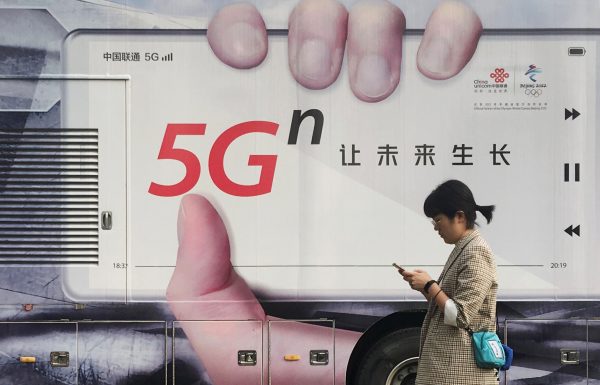The geopolitical imperatives this technology is supporting are reflected in the many warnings from the Trump administration against integrating Chinese 5G technology into national information-communication networks, mainly on the grounds of cybersecurity risks and backdoor espionage.
Washington’s warnings have not gained traction worldwide. ASEAN is upholding the principle of technological neutrality like the European Union — freedom to choose whatever technology fits each country’s needs. Several policy positions have since taken root in the region. With the exception of Vietnam, ASEAN member states have not excluded Huawei or ZTE, the major providers of Chinese 5G technology, from their quest for technological upgrading.
Countries have been cautious about upsetting the balance ASEAN has struck between Washington and Beijing by locking companies out. For instance, Singapore has stressed the importance of a multi-vendor approach to avoid dependency on any single provider.
But costs remain the key factor for others. Huawei’s 5G options are generally cheaper and for countries constructing 5G atop existing 3G and 4G networks, any serious attempt at sidestepping Washington’s highlighted cybersecurity risks could entail replacing infrastructural foundations already laid with Chinese technology. Huawei’s emerging extra-technology charm offensive — which features an offering to build 5G manufacturing plants and training centres — could also increase its appeal.
Low costs upfront could mean higher costs down the line for securitising these networks. Calls for abandoning Chinese gear aside, the United States is late to the game in offering a credible alternative. Beyond proposals for a Utilizing Strategic Allied Telecommunications Act, officials most recently floated thoughts of buying controlling stakes in Huawei’s biggest rivals — Nokia and Ericsson.
For ASEAN, 5G more closely resembles the Morton’s fork dilemma rather than that between Scylla and Charybdis: both choices lead to the same outcome. Whether it is Washington or Beijing, the possibility of backdoor espionage looms from all sides. Washington is unlikely to eliminate such in-built loopholes critical to their own surveillance efforts in any supported 5G technology.
ASEAN leaders are proceeding with caution, addressing cybersecurity risks while keeping national interests in mind. Absent a rules-based regime that major powers agree upon, ASEAN is individually — though at varying speeds — and collectively undertaking the coordination and capacity-building labour to fortify its digital economy and address geopolitical scrutiny. Singapore already has a specialised cybersecurity team to prepare for 5G rollout, whereas Malaysia’s centre for 5G cybersecurity is in the planning stages. Conversely, Brunei only announced plans to establish a national cybersecurity agency in 2019.
Regional strategies are also in the works with Singapore spearheading several initiatives as the most digitally advanced ASEAN member state and the biggest projected winner from the 5G revolution. Data security is a key issue in the ASEAN Framework for Digital Data Governance and its concomitant forums, while a formal ASEAN Cybersecurity Coordination mechanism was inaugurated in Singapore last year. Under the US-Singapore Cybersecurity Technical Assistance programme and ASEAN-Singapore Cybersecurity Centre of Excellence, cybersecurity capacity-building has also seen a boost. Whether the former can move the needle in favour of Washington’s preferred standards and norms remains to be seen.
Attention on the digitisation issue is expected to continue with Vietnam’s ASEAN chairmanship, given that a regional 4IR strategy is slated as deliverable. It is unclear, however, if and how Singapore will be engaging in any ‘backseat driving’ and whether the digital development agenda can be wholly pursued this year, given COVID-19’s derailing effects, though shoring up on digital cooperation and the currency of connectivity are arguably more pivotal than ever.
Geopolitical tensions may linger but are unlikely to divert focus on digital development within the region overall. ASEAN’s concern of falling victim to major power competition is second only to fears that the ASEAN project fails to benefit its populace.
This does not necessarily mean that regional frameworks will be expedited, given ASEAN’s consensus-based model. Yet this may not be a wholly negative development especially in the uncertain terrain of digital economy rulemaking. The digital economy has flourished so far both despite and because of regulatory lag. Just as e-commerce rules facilitate tapping into the growing digital pie, innovations such as ride-hailing apps have disrupted traditional business models in the regulatory wilderness. While policymakers should manage emerging issues, regulatory overhang could also stymie ASEAN’s digitisation dreams.
Geopolitical tensions should not, and are also unlikely to, force a premature departure from ASEAN neutrality. For those keen on choosing sides, it should be noted that the great tech game has only just begun. Harnessing the 5G-backed 4IR requires both hardware and software. While Huawei has a foothold in the former, western and Japanese companies still have an upper hand in the latter — one that may become more prominent with transitions towards virtualised networks.
A guiding ethos of neutrality with an eye towards development remains a safe bet for ASEAN to navigate both the emerging 5G question and the broader digitisation dilemma.
Amalina Anuar is a Research Analyst with the Centre for Multilateralism Studies at the S Rajaratnam School of International Studies (RSIS), Nanyang Technological University (NTU), Singapore.

